A big question inshore anglers have is "do speckled trout die when they're released?" Or, more accurately, "does catch and release work for speckled trout? The reason this comes up is because in November of last year Louisiana lowered the speckled trout creel limit from our familiar twenty-five to a paltry fifteen.
This happened after years of trout population studies, anglers speaking their mind at Louisiana Wildlife & Fisheries Commission meetings and tons of merciless back-and-forth in the cesspit of social media.
This occurred mostly between advocates for keeping the speckled trout population from imploding and people who wanted to maintain their ability to keep 25 speckled trout on each fishing trip.
One argument we all heard from the latter was the one of speckled trout discard mortality rate, or that speckled trout die easily after being caught so there is no point in releasing them.
This was easily dismissed because there's no evidence to back this up. Nor had I seen this in person after tagging and releasing over 1,000 speckled trout.
I figured this would go away after the limit changed, but to my shock there are still people who believe this nonsense.
To be clear, it's not like I'm some kind of tree-hugging fruitcake. Absolutely not. I keep speckled trout and eat them every week, if not everyday.
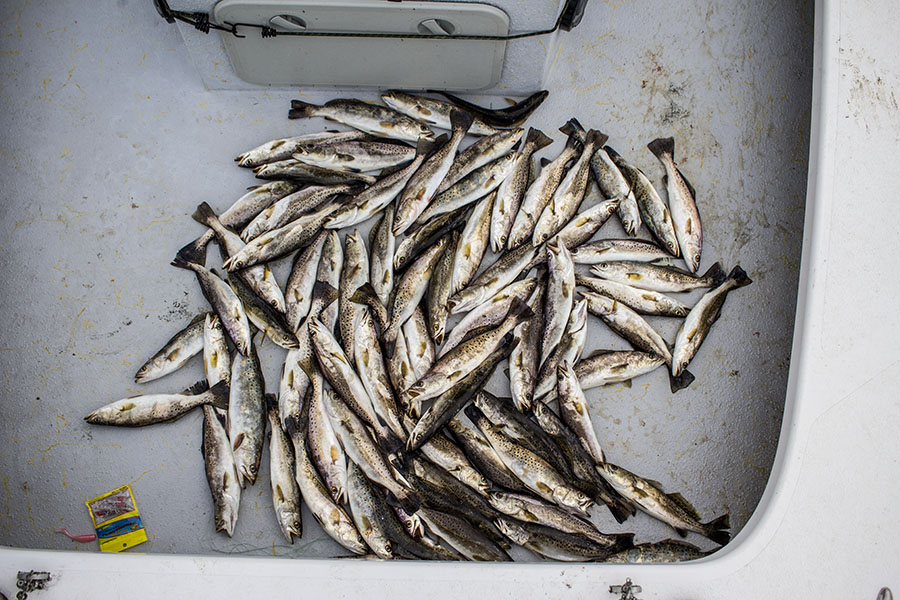
No tears fall from my face, no sleep is lost at night. Keeping a limit of speckled trout is fine, but years of doing so have matured me into a more ethical angler that releases plenty of fish. I hope your journey is the same.
But I have spent a long time fishing across Louisiana's coast for speckled trout, and that experience has fostered an immense amount of respect, love and admiration for this animal.
You could say that inshore fishing is something I take pretty seriously, and have always advocated that conservation begins with Louisiana's inshore anglers, rather than having the government tell us what to do.
So, in this blog post, I'd like to dismantle the idea that lowering the limit and catch & release is anything but bad for speckled trout by pointing you to excellent resources that prove catch & release to be perfectly ethical.
Do Speckled Trout Die After Being Released?
Mostly "no", but sometimes "yes".
I can tell you from experience that as long as you're not ripping a treble hook out of their stomach they are more likely than not going to make it.
This comes from my experience of catching, tagging and releasing speckled trout. After landing a fish, I'd tag her then put her in a big livewell where I'd keep an eye on her. There's no point in releasing a tagged speckled trout that's just going to die, right?
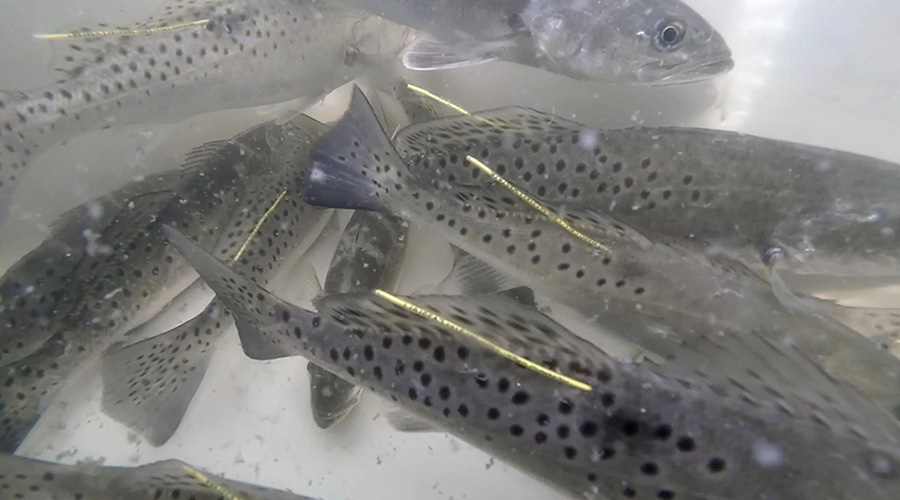
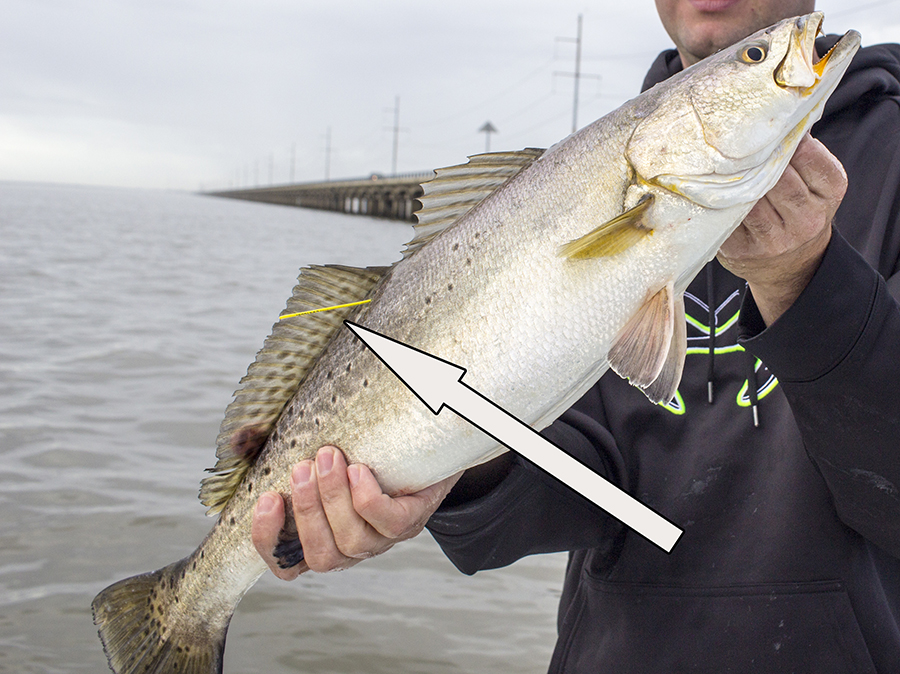
That and it was just easier to catch fish first, load up the livewell, then tag 'em and release 'em.
So these speckled trout would spend a good chunk of the day with me!
I am telling you that — as long as you changed out their water and kept them aerated — they did just fine, especially in water temps ranging in the 60s and 70s.
And this worked for over one thousand of them.
Don't you think that if speckled trout were so sensitive that they would die while in the livewell?
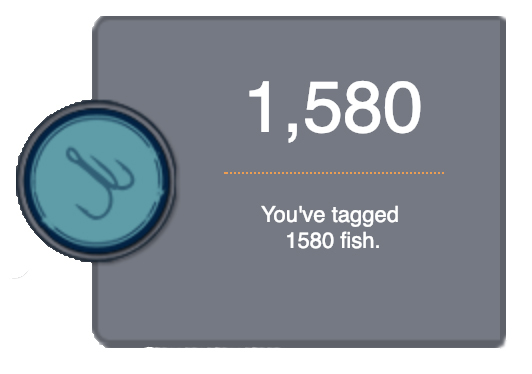
A screenshot from my TAG Louisiana dashboard. Yes, that's combined speckled trout and redfish, but far more trout than reds. This number pales in comparison to tagging OG's like Charlie Bush.
The Various Studies Proving How Tough Speckled Trout Really Are
So, that short tagging anecdote is just one of many personal experiences of speckled trout not dying as often as the anti-limit people would have you believe.
With that out of the way, let's go ahead and take a look at other resources you will find interesting.
Dr. Greg Stunz & the Harte Research Institute
While there are many people doing great things in the realm of speckled trout conservation, one that has really stood out to me is Dr. Greg Stunz at the Harte Research Institute in Corpus Christi, Texas.
He's conducted a 10-year study detailing the impact of speckled trout conservation, showing just how hardy they are and how well they survive catch and release, that number being over 90% of speckled trout caught and released.
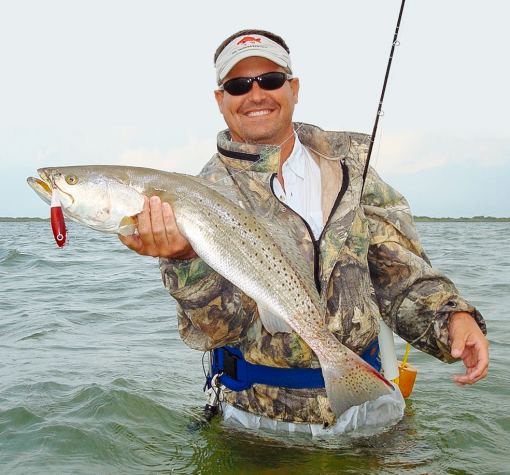
I wonder how that number compares to when they're thrown on ice?
Anyway, my favorite part of his research is when they kept speckled trout in a tank and pulled them out periodically to remove their slime coat with a towel, and those speckled trout survived just fine.
The research he has to talk about is pretty interesting and worth further highlighting here, but I'd rather not steal thunder from where I heard it in the first place: Chris Bush's The Speckled Truth.
Specifically, you can find that episode at this link on PodBean.
You can also enjoy a Truth on Tap livestream that Speckled Truth did with Dr. Greg Stunz in this YouTube video.
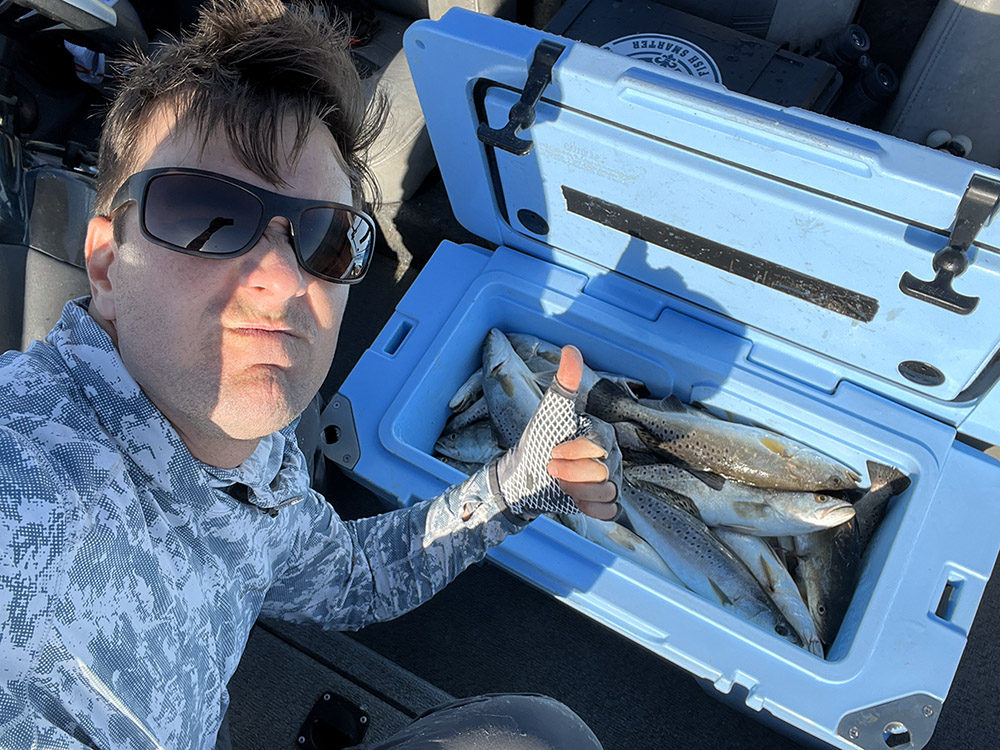
[sarcasm] I have LOTS of experience proving that speckled trout 100% die inside the cooler. However, I will keep testing this hypothesis for science. [/sarcasm]
Speckled Trout Release Mortality Rate Study Done By Virginia Institute of Marine Science
Yes, speckled trout swim in places other than the Gulf Coast, and Virginia is one of them.
This study conducted by the Virginia Institute of Marine Science aimed to reveal the number of speckled trout that die after being caught and released.
To this end, they caught and released nearly 400 speckled trout ranging from 10 to 22 inches in length, and found that roughly 3-4% of fish would die after release.
That's a much better number than the 100% that die when ran through with a fillet knife.
However, what makes this study so interesting is that they constructed holding pens in open water to keep the speckled trout for observation after being released.
So they didn't just unhook these fish, toss them in the water and mark it as a survival. No, they kept them for observation for an additional three to seven days.
And the release mortality rate they got off that is 3-4%. Mind boggling.
If you really love speckled trout and learning more about them, then you will love reading this study.
There's a slew of other cool things they did with speckled trout (like tethering one to a GPS).
You can read it all here at this link on Scholar Works.
Louisiana Sea Grant Speckled Trout Study
Next up is a resource I've used extensively over the years, and it's been something of a mainstay whenever referencing speckled trout facts.
That resource is this 2003 fact sheet from Louisiana Sea Grant. Here's an excerpt:
"The majority of hook-caught speckled trout survive when released. Louisiana conducted a 18-month study ending in 1995 on the survival of released speckled trout. The survival rate depended on the fishing method. Treble hook artificials had a 97% survival rate, single hook artificials were 91%, treble hook with bait had 83%, and single hook with bait was 74%."
What's interesting about that is how much better speckled trout survive catch & release when anglers use artificial lures.
To fall from 97% to 74% sure is a radical drop.
I'd also say that it's my observation that the majority of people who advocate for catch and release (as well as dropping the creel limit) are avid users of "artificial" lures such as jigs, suspending baits, jerkbaits, Corkies, topwater lures and more.
Look, at the end of the day there are many of these studies for you to enjoy. You really don't have to look far on the Internet to find them and, when you do, you won't find a single study reporting the inverse of what I've shown you thus far.
With that in mind, you may be thinking of the following question:
Where did the argument of "speckled trout die after being released" come from?
It was nowhere to be found until the whole "lowering the limits" controversy started in the first place.
In my opinion, a handful of Louisiana anglers who are scared of change reacted in the wrong way: instead of accepting what the Freshening did to Louisiana's coast and then taking responsibility for that change, they instead did the intellectually cheap thing and moved the goal post instead.

The only argument they could come up with is: "there's no point to releasing fish because they're just going to die anyway."
At first glance you'd think that this is a very serious matter and that we should be more delicate with how we fish for speckled trout, especially when trying to catch a limit.
But if you stop and think about it, you'll see that this argument does not hold up to scrutiny at all. It's so poorly thought out that it's hilarious. Let me explain:
Why the "trout will die anyway" argument is total garbage
If speckled trout are more likely than not to die after being released, then there's no point in catching them unless you are going to keep them and eat them, right?
Well, that's the moral high ground that anti-limit proponents have taken up. So virtuous.
This idea would work only if you caught keeper speckled trout.
But what if you're in a mixed bite of throwbacks and keepers? What if it's one of those days where there's just more dinks than keepers?
Should you clutch your bleeding heart and go home? No.
Would the anti-limit folks do that? Ha ha ha! No. Not at all.
These are the same folks arguing that Louisiana's inshore fishing economy would be hurt if anglers cannot keep 25 twelve-inch speckled trout.
Boy, if they think that's tough, wait until you have to go home because you already caught too many throwbacks!
A Quick Note About Keeping Limits of Speckled Trout to Support a Business
Having once been a guide (albeit for only a few short years), I can attest to the notion that you need to catch fish in order to keep customers happy.
While there are appreciative and understanding clientele out there, I wouldn't hang my hat on $1,000 boat rides. You need to catch fish.
But that does not equate to keeping fish.
I think people are more happy with experiences and being provided with a means to remember them.
That experience: going on an epic Louisiana inshore fishing trip and catching 100+ hammer speckled trout.
That means: the smartphone you carry everywhere.
A father would very much appreciate good pictures of his kids with their catch rather than the same slimy dock shot of dead fish.
The dock shot was practical during the 1990s and 2000s when we didn't have smartphones and couldn't take umpteen pictures and share them on demand. Now we can.
The dock shot is not everything: being able to demonstrate that you can provide rare and valuable experiences is.
Maybe you don't agree with me, so consider that I am the only guy in Louisiana who figured out how to make a healthy living teaching people how to fish on the Internet.
I may have some good ideas.
So it's clear they didn't think that argument through at all, but I'm not quite done.
After that, this sham of an argument completely misses the point that lowering the limit literally means fewer fish being thrown on ice and, as an extension, fewer fish being caught and released overall.
If you are in a fishing scenario where throwbacks are mixed in with keepers, then by the time you get to 15 you would have caught and released fewer throwbacks than if you had to go to 25.
Furthermore, their argument isn't practical to enforce. How can a wildlife agent possibly know how many speckled trout you caught and released?
He cannot. Their life is already hard enough as it is, it's even harder when you can't read people's minds.
That and this make-believe policy counts on people to have the kind of altruism few of them have ever displayed in the first place.
It is, at best, wishful thinking. Especially considering that Louisiana has a "release in grease" culture.
Which is fine. We know how to cook speckled trout! They're delicious, why wouldn't we? But I'm not going to pretend like that culture doesn't exist, either.
Last, but not least, these same people (whom I am gracefully not identifying here) never brought this up before the creel limit change.
In fact, they hardly (or ever) practiced conservation or mentioned it.
Take a look at their posts on social media (or, if you're really old school, you remember the RodnReel fishing reports) and all you'll see are dock shots of dead speckled trout, the literal oxymoron of dead trout swirling in a livewell or — if you're really lucky — the occasional bragging post of "we caught our limit, returned to the dock for a fresh cooler, then went back and caught another limit".
Yeah, those are the people saying catch and release is detrimental to Louisiana's speckled trout fishery.
Those are the people who somehow think a 3-4% mortality rate from catch & release is somehow more than the 100% mortality rate when a fish arrives at the cleaning tables.
Is it okay to have fun catching and releasing speckled trout?
Yes it is. It's perfectly fine.
Go have fun, enjoy yourself, spend some money at the marina and tackle store, contribute to the economy and watch how the world continues to spin on its axis.
What We Need To Do If We Really Want To Have More Speckled Trout To Catch & Keep (or release) In Louisiana
We already knocked out the nuclear option, and that was lower the limit. That was done last year in November, it's done. It's here to stay. It is what it is.
The twenty inch slot is interesting, because there were more than one fishing trip I've had to Breton Sound where all we caught was mostly speckled trout over twenty inches in length. This was pre-Freshening.
After that, I think the speckled trout will make a comeback of some sort since the Mississippi River is behaving itself and a Saltening is upon us.
How big that comeback will be, I do not know. I have not previously lived through flooding of the magnitude we saw from 2011 to 2020.
So, those are two things that are out of our power, but there are things we can do at the individual level:
- use artificial lures
- handle specks more delicately
- practice more catch & release
Fish are less likely to swallow artificial lures as much as they do live bait. Plus, when you fish with soft plastics (or suspending baits or whatever), you become more skilled at fishing and much better at setting the hook, so the fish doesn't have an opportunity to swallow it. This greatly increases their survival rate.
After that, keeping fish wet, using a soft landing net and getting them back in the water as soon as possible all help to increase their longevity.
You don't have to be a tree-hugging sissy about it, just avoid using something like a catfish grip, keep your fingers out of their gills and use pliers if necessary.
After that, if you've never had a "catch and release" trip, then I encourage you to have an open mind and just try it anyway.
It's really nice to get back to the dock and not have any fish to clean. It's so much nicer to spend that extra time fishing and not have the additional cleanup to do.
And this is something you can do when and if you feel up for it. It doesn't have to be forced upon you (and shouldn't be).
What Do You Think About Speckled Trout Release Mortality?
At the end of the day I believe that we have more fun catching speckled trout than we do eating them. Kids never talk about the fish they ate, it was always the experience of catching them that they recall.
It's arguable that speckled trout are too valuable to only be caught once.
So I'm interested to know what it is you think about this hot-button issue. It's great to see people's passion and I'm always happy when people take time to visit my website.
Thank you very much for doing so :D
If you have an opinion that you would like to share, or maybe I missed something, then please post it in the comments below.
Should it be the case that you enjoyed this blog post, then please share it with your friends. I would really appreciate that.

Well, the comment period for the NOI has long since been gone and over with. But I agree that more conservation is not necessarily a bad thing, and that 10 a day is plenty.
Maybe Louisiana should uses Texas rules on trout a daily limit of 3 and they have to be 15 to 20 inches. Sometimes it’s not worth going fishing; especially if you go with a guide that charges $600. Really 25 trout is an overkill. 10 is good days limit.
I could not agree more. It blows my mind how I see deer in Texas and Mississippi, just driving down the road and, in 16 years living at my current residence, have only seen them once. That’s very telling.
If people want to fish and hunt exclusively to feed their families, they should consider the cost savings of getting rid of their truck note, the insurance for it, the extra gas it burns, as well as what they pay for their boat, insurance, gas and so on.
Thank you for commenting!
Louisiana people have to be some of the most ignorant sportsman in the world. People here swear they’re still catching fish and killing deer to provide for their families when it cost 10x more than going to the grocery. One of the worst wildlife conservation efforts in the U.S. 50 trout a person, 12” min a couple years ago. Maybe a hand full of 27” fish pulled out a year. Go to Texas, thats the norm. Louisiana lets you kill 6 deer a year with no antler restrictions , state average is a 1 year old, go anywhere else it’s 1 to 2 deer an year and it’s quality herds and mature bucks. It’s about time LDWF stopped acting as if Louisiana has an endless supply of wildlife for us to kill anything and as much as we want. Now get rid of the commercial poagy fisherman and set antler restrictions. Sincerely, a Cajun that’s been blessed enough to live, hunt and fish around the US.
Gene I totally agree with the dolphins wising up to anglers releasing trout. I have never fished Lousiana. I fish the Texas coast and over the years have noticed the increased dolphin numbers and the comfort they have feeding from anglers. Earlier this summer we were fishing and dolphins were so close to the boat my son and nephew could touch them when putting fish in the water. That was the first time I’ve seen wild dolphin eat out of your hand.
They are similar, they even look alike, but they are not the same.
Are Speckled Trout similar to Weakfish
That’s definitely something good to keep in mind. Thanks for commenting, Jon!
Hey Kane, great questions.
I feel that the only constant in Louisiana is change. Now, whether that diversion is a good change or not is an entirely different matter. But I don’t think that’s what you’re referring to.
What happened with the BCS was resultant of historical flooding of the Mississippi River. Diversion or not, if you can’t control gravity or keep snow from melting, then you’re going to have a lot of river water if there is that much precipitation.
Otherwise, the BCS is DESIGNED to flood Lake Pontchartrain about every two years by leaking through the pins of the spillway. Sometimes a little more, sometimes a little less.
With that said, all the best areas for fishing speckled trout are all influenced by river water. But there is a thing as too much river water and that’s what we saw during the Freshening.
During that time, the alternative to opening the BCS would have been risking a levee breaking and that’s a much bigger problem than catching speckled trout.
Gene, I appreciate you visiting my website, reading this article and taking time to comment. Thank you so much. But I just don’t believe that bottle nosed dolphins are any bigger a problem than they were before The Freshening. Even if they were, that still doesn’t excuse us from taking responsibility for the fishery we want to have. Tight lines!
Really enjoyed the read and study information.Another issue worthy of comment is the ‘porpoise’ problem. I fish in Grand Isle La. The porpoises have evolved into a huge problem.They have learned small trout are released and ‘target’ our boats waiting for fish to be released.From what I see mortality is 100% when a fish is released in this situation. The trout is exhausted just having fought for his/her life and is defenseless. Some days they like to take hooked fish being reeled in.
I have gotten to the point of putting fish to be released in the live well and transporting to another ‘safe’area ie: [porpoise free] before releasing them.Of course I would have no defences in this situation if checked by Wildlife agents.
Thoughts,comments,or solutions would be appreciated.
Great post! I’ve always felt that keeping 5-10 trout is plenty to feed my family so I’ve never understood why people want to kill 25 trout so they can put them in the freezer.
Also, I’d say 5% mortality on caught and released trout matches personal experience. 1 or 2 out of 20 trout released on artificial might not swim off just right.
Curious your thoughts on the Mid-Breton Sediment Diversion and how it might affect inshore fishing? Will it be as impactful as the Bonnet Carre openings?
I need to find some alternative to the ‘boat flip’ landing method, I think. Too often then fish comes aboard, crashes onto the deck – then still needs to be unhooked and (possibly) released. They usually swim away, but dropping a 15” fish to the deck is about like one of us doing a belly-flop (or taking a header) onto a concrete parking lot, so it CAN’T be good for the fish. I do try to swing directly from the water to my gloved hand when I’m releasing fish, but that really only works well with smaller trout…